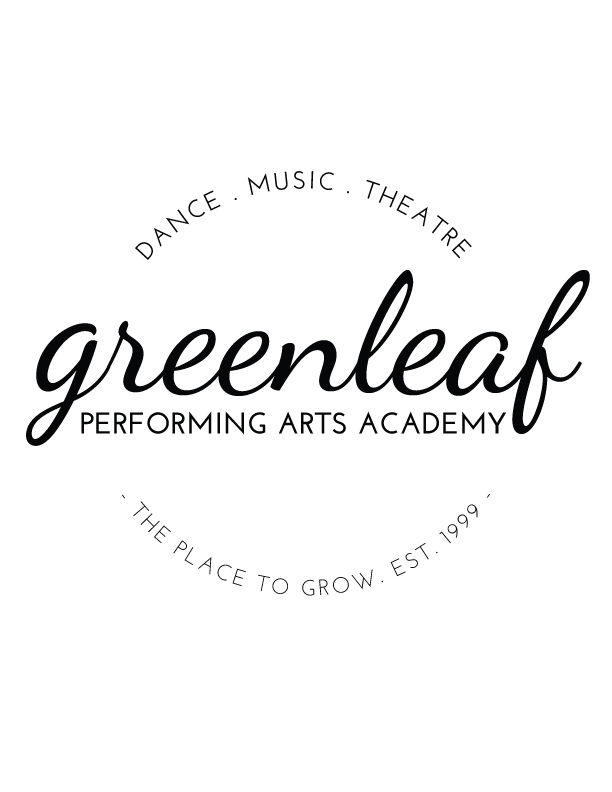
by admin | Jul 25, 2022 | Event
Written by Evi Wheeler | Edited by Carolyn Jensen
Greenleaf is growing!
We are thrilled to announce our third branch and performance venue in west Kansas City, KS, fifteen minutes north of our Cedar Creek location! In addition to dance and theatre classes beginning in September on Mondays-Wednesdays, this new space will also host all Greenleaf music recitals, choir concerts, small-cast theatre and dance events, improv shows, music coffeehouses, and drama class showcases. The dance floor is constructed, mirrors are up, the stage area is being painted and chairs set, and the green room is created. So many great memories will be made here!
KCK, Bonner Springs, Edwardsville and the surrounding areas will now have a Greenleaf close to home with quality theatre and dance classes!
Check out the school year catalog for details of the classes available at all of our three locations. (Enrolling in July helps our teachers plan their classes, so this would be a great week to register. Your monthly tuition charges will not begin until September). If you have questions about class placement, send us an email and we’ll respond as quickly as possible.
We are deeply grateful for you and your support that has made this new venture possible. Please join us for the 2022-23 school year!!
Sincerely,
Evi & David Wheeler, Founders
Greenleaf Performing Arts Academy

by admin | May 15, 2019 | Blogroll
Throughout this blog series, we’ve looked at how embodied education can support your student in myriad ways, leading to improved behavior and better physical and mental health. For our parents of young students, we wanted to look today at how embodied education principles can even support early language development!
Rhythm + Beat
Studies are looking at the link between music and language. Interestingly, they are finding that both rhythm and beat are linked to language skill ability. In one study, researchers found that teenagers who struggled to maintain rhythm also tended to struggle in their language abilities. Dr. Kraus (of the Auditory Neuroscience Lab at Northwestern University) was involved with this study, and stated to BBC News that “in both speech and music, rhythm provides a temporal map with signposts to the most likely locations of meaningful input”¹. So, if your child develops a good grasp of rhythm, this will serve them well as they learn both language and music!
We can easily find the roots of the rhythm-language connection in early language development. Young children who are learning language are establishing “phonemic awareness”. This is an awareness that words, like beats, are discrete sounds. Music + movement and dance camps help children build these essential connections in a fun, accessible way.
Intentional Sensory Activities
Another way to support your child’s language development is by incorporating sensory activities. Experts have long been encouraging sensory activities for language learners because of how helpful movement is in developing language connections. In fact, “recent research demonstrates that similar brain areas are involved in constructing the meaning from linguistic and gestural input”².
So, when you constructively use gestures, there’s a good chance your gestures are helping your child make linguistic meanings, too. Intentional sensory activities can include everything from open-ended toys to music and movement dance and theater classes.
Are you interested in theater or dance camps for your child? If so, check out our Summer 2019 camps and classes to support your language learner. We now have offerings at both our Cedar Creek and South Olathe locations! Learn more here.
Sources:
¹https://www.bbc.com/news/science-environment-24124158
²https://www.mpi.nl/q-a/questions-and-answers/what-is-the-connection-between-movement-and-language

by admin | Apr 24, 2019 | Blogroll
Earlier in this series, we talked about how embodied education positively impacts mental health. In this article, we want to focus on how an embodied philosophy of learning can positively impact physical health, too. Whether your student is interested in dance classes or acting classes, an embodied arts education provides numerous opportunities to build healthier bodies.
Dance Class Benefits
Different types of dance will have different impacts on student bodies. However, most dance disciplines share at least a few benefits. Better Health¹ states that dance lessons:
- Improve muscle tone + overall strength
- Develop essential motor skills
- Improve cardiovascular fitness
- Result in better coordination, balance, and spatial awareness
Recall also that various types of dance will work various parts of the body. For example, ballet classes may use a completely different set of muscle groups than hip-hop classes will. Engaging with different types of dance will help students’ bodies engage with different muscle groups and help improve all of them, over time.
Theater Class Benefits
Acting classes can also be a helpful, productive physical experience. In theater, students learn to embody different characters and accomplish different scenes. Recently, researchers studied whether theater could be used to help with students who experience either a type of weight disorder or a level of body dysmorphia. They found that participation in theater lead to “positive changes in peer communication, improved body satisfaction, increased resilience to comments from others, [and] may be an effective strategy for prevention of weight-related disorders”². So, the benefits of theater for physical well-being may not be as immediately obvious as dance. But they may be longer-lasting and have deeper impact overall.
Are you interested in enrolling your student in theater or dance classes at one of our Olathe, KS locations? Click here to find out more about current class offerings and enrollment.
Sources:
¹https://www.betterhealth.vic.gov.au/health/healthyliving/dance-health-benefits
²https://www.ncbi.nlm.nih.gov/pubmed/18443982





